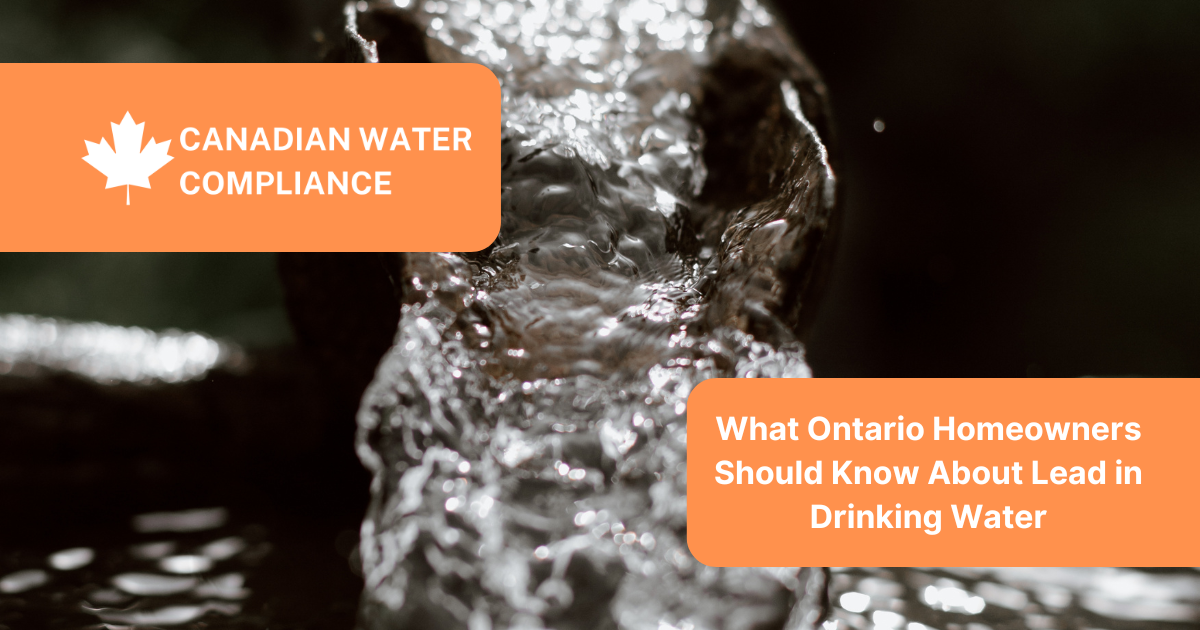
Written By: Canadian Water Compliance | On
Many Ontario homes, especially those built before the 1980s, may still be at risk of lead contamination in drinking water. Lead exposure is a serious public health issue, particularly for infants, young children, and pregnant individuals. Despite the elimination of lead pipes in modern construction, legacy plumbing and service lines can still pose a danger.
If you’re a homeowner in Ontario, here’s what you need to know about the risks of lead in drinking water, how to test for it, and what steps to take to protect your household.
Lead typically enters drinking water through corrosion of lead-based plumbing materials. These sources include:
Lead service lines connecting homes to municipal water systems
Interior plumbing with lead solder or brass fixtures containing lead
Private wells drawing from groundwater with naturally occurring lead
Even homes connected to municipal systems can have lead problems if service lines or in-house pipes contain lead. The risk is especially high in homes built before 1986.
No level of lead exposure is considered safe. Lead affects nearly every system in the body and is particularly harmful to:
Children, where it can impair brain development and reduce IQ
Pregnant individuals, increasing risks of miscarriage and developmental issues
Adults, causing cardiovascular problems and kidney damage
Because lead is tasteless, odourless, and invisible in water, testing is the only way to confirm its presence.
The Ontario Ministry of the Environment, Conservation and Parks recommends testing for lead if:
Your home was built before 1986
You have not replaced old plumbing
Your municipal water provider has issued lead advisories
Homeowners can:
Request testing through their municipality (some cities offer free sampling programs)
Use a licensed laboratory to analyze water samples from kitchen taps
Hire certified professionals, such as Canadian Water Compliance, for accurate, hassle-free testing and interpretation
If test results show elevated lead levels (above 10 ppb as per Ontario Drinking Water Quality Standards), immediate actions include:
Stop using tap water for drinking, cooking, or baby formula until the issue is resolved
Use NSF-53 certified filters that remove lead
Flush taps for several minutes before use
Replace lead service lines and plumbing, if possible
Install point-of-use or whole-home treatment systems
Municipalities may offer partial support for replacing lead service lines. Check with your local water utility for guidance.
We offer homeowners across Ontario a comprehensive lead testing service that includes:
Certified water sampling and accredited laboratory analysis
Clear, easy-to-understand reporting
Consultation on mitigation strategies and plumbing upgrades
Ongoing testing plans for peace of mind
Protecting your family starts with knowledge. Contact Canadian Water Compliance to schedule your lead water test today.